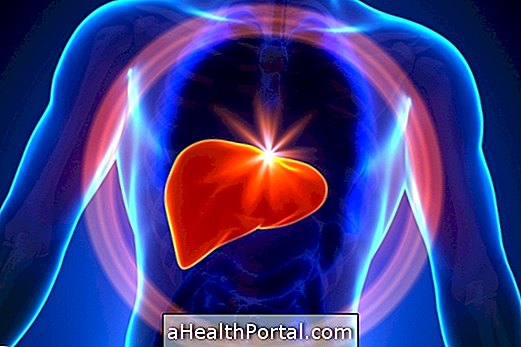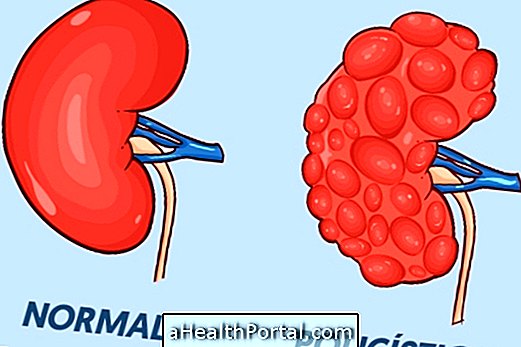The hemangioma in the liver is a small nodule formed by a tangle of blood vessels, which is usually benign, not evolving into cancer and causing no symptoms. The causes of hemangioma in the liver are not known, however, this problem is more common in women between the ages of 30 and 50 who have already been pregnant or who do hormone replacement.
Hemangioma in the liver is usually not severe and is discovered during diagnostic tests for other problems, such as abdominal ultrasound or computed tomography.
In most cases, the hemangioma does not require treatment, disappearing alone and without presenting threats to the patient's health. However, there are situations in which you may grow too much or present a risk of bleeding, which can be dangerous, so the hepatologist may indicate surgery.

Possible symptoms
Symptoms of hemangioma may include:
- Pain in the right side of the abdomen;
- Nausea and vomiting;
- Feeling of satiety after eating little food;
- Loss of appetite.
These symptoms are rare and usually arise only when the hemangioma is over 5 cm in size, and it is recommended that you consult a hepatologist to make an appropriate assessment.
The exams and analysis of the hepatologist will observe the need to perform the treatment or just observe, besides differentiating that the nodule is not a liver cancer. Check for signs of liver cancer.
How to confirm
Liver hemangioma is detected through imaging tests of the abdomen, such as ultrasound, computed tomography, or magnetic resonance imaging.
These tests are also useful for differentiating the hemangioma from other types of liver lesions, such as malignant tumors or the liver cyst, which is an accumulation of fluid in this organ. To understand the differences, check out more about what the liver cysts are.


How is the treatment done?
Treatment for hemangioma in the liver should be guided by a hepatologist, but usually only when the patient has symptoms such as abdominal pain or constant vomiting when there is doubt that the hemangioma may be a malignant tumor or when there is a risk of vessel rupture with bleeding.
Usually the most commonly used treatment for hemangioma in the liver is surgery for removal of the nodule or the affected part of the liver, but in more severe cases radiotherapy or liver transplantation may also be required.
When the patient does not need treatment for hemangioma in the liver, it is recommended to monitor the problem at least once a year in the hepatologist.


















